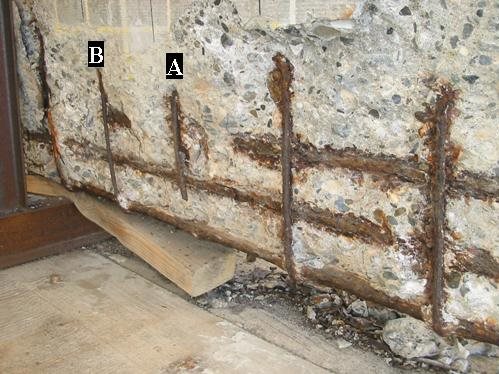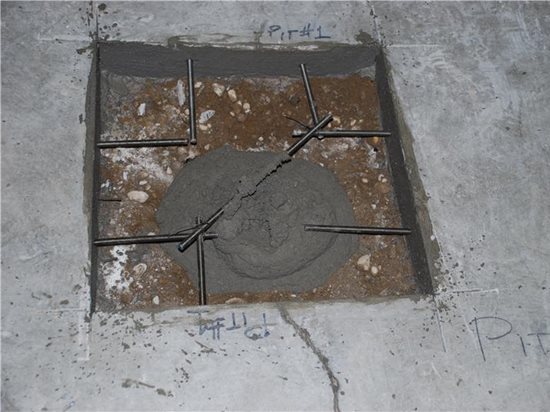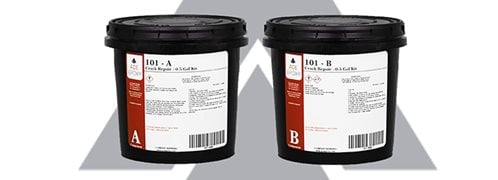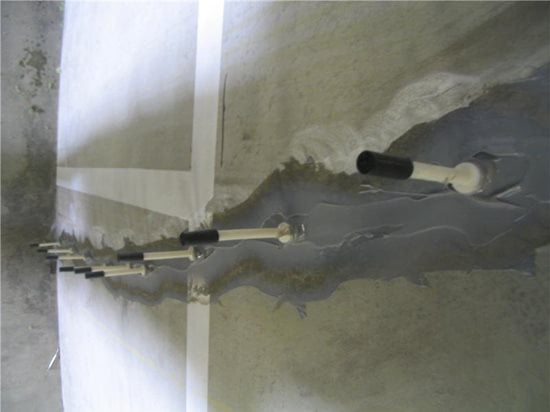- Concrete Repair Home
- Surface Repairs
- Structural Repairs
- Slab Repairs
- Concrete Crack Repair
- Common Concrete Repairs
- Stamped Concrete Repair
- Driveway Repair
- Pool Deck Repair
- Fix Spalling Concrete
- Concrete Repair Methods & Systems
- Concrete Crack Injection for Basements
- Why Concrete Cracks
- Sunken Concrete Foundations
- Repairing Bowed Basement Walls Using a Carbon-Fiber-Reinforced Grid
- Concrete Raising & Leveling Equipment
Leveling Uneven Patios, Pool decks, Walkways, Driveways & More.
Section Sponsor

Concrete Crack Repair Kits
Structural Concrete Repairs
When a crack affects the performance of the structure, then we will repair it to restore its structural properties. Epoxy injection is typically the basis for this type of repair, with or without added reinforcement. The injected epoxy is actually stronger than the concrete and can restore the concrete strength, but if there is an underlying problem, such as an overloaded structure or some movement condition, the concrete will simply crack again in another location.

When reinforcement corrodes and delaminates the concrete covering,
reinforced concrete can quickly lose strength. Oregon State University
To use epoxy injection to repair a crack, the crack is first cleaned by vacuuming or flushing with water to get out any dirt or contamination. The cracks on the surface are then sealed with an epoxy gel to prevent the injected epoxy from running out. Injection and venting ports are installed and the epoxy is injected. High pressure is not used since that could actually widen the cracks. Once the cracks have been filled, the ports and surface seals are removed, typically by grinding the surfaces flush with the concrete matrix. Epoxy injection has also been successfully used to repair surface delamination of slabs. Learn more about crack injection.
When concrete is too deteriorated for epoxy injection, then all unsound concrete is removed and new concrete is placed. Obviously, great care must be taken to stabilize the structure prior to removing the damaged concrete, by shoring or other means. Once again, the secret to successful repairs of this sort is in the preparation. No deteriorated concrete can remain and anyplace where reinforcing is corroded, the concrete must be removed from completely around the bars, providing and at least ¾-inch clearance on all sides. The steel is then cleaned to remove any loose corrosion products (rust). If the cross section of the steel has been reduced significantly, new steel will be tied to the existing steel prior to replacing the concrete.

Full-depth repairs require new steel to be installed and tied into the existing concrete. Applied Engineering & Technology
As with most repaired areas, the edges of the repaired areas should be cut at a 90-degree angle. Feather edges should be avoided at all costs. The configuration of the area to be repaired should be kept as simple as possible, and preferably square. An excellent and fairly simple source of more information on this technique is ICRI's Guide for Surface Preparation for the Repair of Deteriorated Concrete Resulting from Reinforcing Steel Corrosion, Guideline No. 03730.
If strengthening is needed, there are a variety of techniques used, including simply increasing the size of the concrete member and external reinforcing. External reinforcing is often accomplished by bonding some sort of flexible reinforcement, like carbon or glass fibers, to the exterior of the concrete member then covering it with placed concrete, troweled-on concrete, or shotcrete.
 Concrete Foundation Repair Kits
Foundation Crack repair kits for any size job for Contractors, Homeowners, & D-I-Y owners
Concrete Foundation Repair Kits
Foundation Crack repair kits for any size job for Contractors, Homeowners, & D-I-Y owners
 Epoxy Crack Repair
$39.86
Epoxy Crack Repair
$39.86
 Concrete Lifting
Expand your business offering
Concrete Lifting
Expand your business offering
 Concrete Slab Repair
Kits for concrete slab repair
Concrete Slab Repair
Kits for concrete slab repair
 High Performance Concrete Repair
Fast setting mix for structural repairs
High Performance Concrete Repair
Fast setting mix for structural repairs
 Divot Patch - Concrete Repair
15-minute set time
Divot Patch - Concrete Repair
15-minute set time





